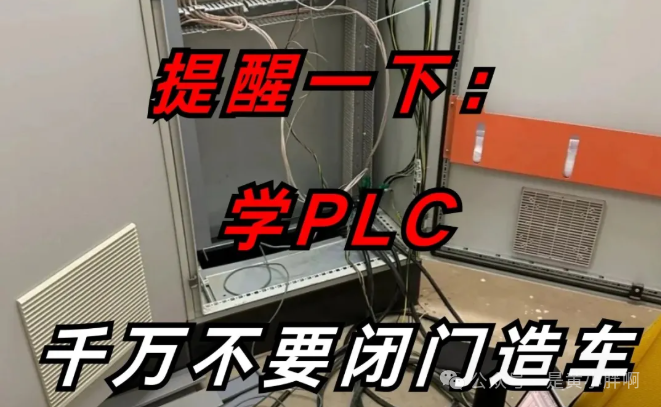
PLC System Startup: Writing Initialization Programs to Ensure Safe Device Startup!
Introduction
**Hello everyone!** Today we are going to discuss a critical topic that concerns the stability of the entire automation system—written initialization programs during PLC system startup.Don’t underestimate this “first thing to do when powering on”; it directly determines whether your device can start safely and operate stably!
Imagine if your PLC fails to initialize properly at startup, it would be like a car that, after ignition, has a locked steering wheel and malfunctioning brakes—how dangerous that would be! Through reasonable initialization program design, we can not onlyavoid 90% of startup failures, but alsosignificantly reduce equipment debugging time. Want to know how to do it? Let’s dive deeper together!
Why is the Initialization Program So Important?
First, let’s look at a fewharrowing lessons:
-
A packaging machinery factory: The PLC failed to initialize the counter at startup, leading the device to mistakenly judge “1000 packages completed”, directly skipping the normal production process, resulting ina whole batch of products being scrapped.
-
A car welding line: The status of the solenoid valve was not reset, and at the moment of startup, thecylinder suddenly acted, almost injuring the operator.
-
A water treatment plant: The analog input channel was not initialized, causing the pH detection module tomisread data, leading to the dosing system going out of control.
<span>The initialization program is the "self-check" for the PLC</span>, ensuring:
-
All variables are in a known state (no “residual values from the last shutdown”)
-
Safety devices are activated immediately (emergency stop, light curtains, etc. must be activated at the first moment)
-
The device returns to the reference position (to avoid mechanical collision risks)
-
The communication module is correctly connected (to prevent subsequent processes from failing due to communication issues)
The “Golden Rules” of Initialization Programs
1. Memory clearing is not a panacea!
Many engineers like to use<span>MOV 0</span> for large-scale clearing, butsome data absolutely cannot be cleared indiscriminately:
-
Recipe parameters: After clearing, operators need to re-enter all parameters
-
Cumulative running time: Affects equipment maintenance plans
-
Safety verification values: May lead to false triggering of safety systems
<span>Recommended practice</span>:
// Safety variable initialization example (Siemens SCL language)
IF "First_Scan" THEN
"Emergency_Stop" := TRUE; // Emergency stop activated by default
"Cylinder_Home" := FALSE; // Cylinder retracted by default
"Motor_Speed" := 0; // Motor speed set to zero
"Alarm_History" := RETAIN; // Alarm records retained
END_IF;2. Staged Initialization
<span>Do not cram all initialization into one OB block!</span> It is recommended to handle it in layers:
| Stage | Task | Typical OB Block |
|——|——|———-|
| Hardware Level | Detect module status, verify IO | OB100 (Startup Organization Block) |
| Safety Level | Activate emergency stop, safety loop | OB121 (Fault Organization Block) |
| Process Level | Reset cylinder, zero motor | FC Block (called in OB1) |
| Communication Level | Establish HMI/inverter connection | OB35 (Cyclic Interrupt Block) |
3. Must Include “Death Detection”
If the following issues are found during initialization,the system must be shut down immediately and an alarm triggered:
-
Critical module missing (e.g., safety PLC not responding)
-
Absolute encoder verification failed
-
Abnormal power supply voltage
<span>Red alert code example</span>:
IF NOT "Safety_PLC_Ready" THEN
"Shutdown_Command" := TRUE;
"Alarm_Code" := 16#8001; // Safety system fault code
END_IF;Practical Case: Injection Molding Machine Initialization Program
Customer Pain Point:
Every time the mold is changed, over 20 parameters need to be manually adjusted,averaging a waste of 30 minutes.
Our Solution:
-
Create a mold number variable (0=no mold, 1-99=mold ID)
-
Automatically load preset parameters during initialization:
CASE "Mold_ID" OF
1: // Mold 1 parameters
"Injection_Pressure" := 120.0;
"Clamping_Force" := 800;
2: // Mold 2 parameters
"Injection_Pressure" := 95.5;
"Clamping_Force" := 600;
ELSE // Default safety values
"Injection_Pressure" := 80.0;
"Alarm" := "NO_MOLD_SELECTED";
END_CASE;Results:Startup time reduced to 2 minutes, and completely eliminated equipment damage caused by parameter input errors.
Common Traps and Pitfall Avoidance Guide
❌ Incorrect Practice: Relying on HMI Initialization
<span>The HMI may start slower than the PLC!</span> Critical safety parameters must be independently initialized on the PLC side.
✅ Correct Practice: Double Assurance
// Set initialization completion flags in both PLC and HMI
IF "PLC_Init_Done" AND "HMI_Init_Done" THEN
"System_Ready" := TRUE;
END_IF;❌ Incorrect Practice: Ignoring the Difference Between Cold Start and Hot Start
**<span>Cold start (power off restart)</span> requires full initialization,<span> hot start (program download)</span>** may need to retain some running data.
✅ Correct Practice: Use Startup Type Judgment
// Siemens PLC detects startup type
IF "Startup_Type" = WARM_START THEN
// Retain production count
ELSE
// Full initialization
END_IF;Is Your Initialization Program Robust Enough?
Self-Check List:
-
Is the emergency stop loop forcibly activated in OB100?
-
Has the analog input channel been filtered during initialization?
-
Have all moving parts set starting position limits?
-
Are communication timeout parameters reasonably configured?
-
Is the historical data storage area avoided during initialization?
Interactive Discussion
-
What is the most challenging issue you have encountered in initialization programs?
-
How do you handle data that needs to retain memory after power loss?
-
Have you ever encountered equipment accidents caused by improper initialization?
Remember: A good initialization program is like an airplane’s checklist—it may seem cumbersome, but it can keep you away from 99% of catastrophic failures! 🛡️
(Feel free to share your experiences in the comments, and let’s work together to create safer automation systems!)
ShareCollectViewLike